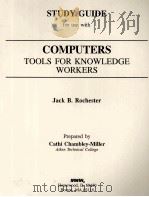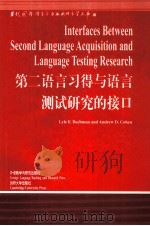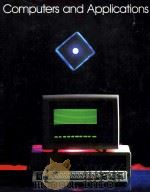《INTERFACING BETWEEN LAWYERS AND COMPUTERS AN ARCHITECTURE FOR KNOWLEDGE-BASED INTERFACES TO LEGAL D》
| 作者 | LUUK MATTHIJSSEN 编者 |
|---|---|
| 出版 | KLUWER LAW INTERNATIONAL |
| 参考页数 | 269 |
| 出版时间 | 1999(求助前请核对) 目录预览 |
| ISBN号 | 9041111816 — 求助条款 |
| PDF编号 | 813696918(仅供预览,未存储实际文件) |
| 求助格式 | 扫描PDF(若分多册发行,每次仅能受理1册) |
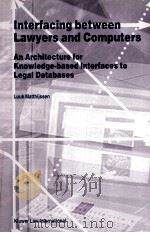
Chapter 1 Introduction1
1.1 An example information retrieval session1
1.1.1 Information retrieval and the cost of housing1
1.1.2 Summary of the problems encountered1
1.1.3 The subject of this book2
1.2 Legal databases3
1.2.1 Legal information and legal communication3
1.2.2 Information technology and law6
1.2.3 Brief history of legal databases11
1.2.4 Current issues in legal databases14
1.3 Research goals17
1.3.1 Research motivation17
1.3.2 Research questions18
1.3.3 Research method18
1.4 Contribution of this book19
1.4.1 Legal informatics19
1.4.2 Information retrieval19
1.4.3 Knowledge-based systems19
1.4.4 Legal theory19
1.5 Outline of this book20
Chapter 2 Legal Information Retrieval21
2.1 Information retrieval21
2.1.1 Data and Information21
2.1.2 The IR principle25
2.1.3 Indexing26
2.1.4 Query formulation27
2.1.5 Matching28
2.2 IR problems29
2.2.1 Theoretical limitations29
2.2.2 Indexing30
2.2.3 Query formulation31
2.2.4 Matching31
2.2.5 Conceptual gap33
2.2.6 IR performance studies33
2.3 Advanced IR systems35
2.3.1 Advanced indexing35
2.3.2 Advanced query formulation38
2.3.3 Advanced matching39
2.3.4 Conceptual gap40
2.4 Knowledge-based index organisation41
2.4.1 Knowledge representation in IR41
2.4.2 Legal knowledge representations in IR systems42
2.4.3 Knowledge-based hyperindex44
2.5 Summary and conclusions45
Chapter 3 A Task-based Hyperindex47
3.1 Intelligent interfaces47
3.1.1 The concept of intelligent interfaces47
3.1.2 Knowledge models52
3.1.3 Task-based IR56
3.2 Legal knowledge models56
3.2.1 Analysis of legal tasks56
3.2.2 Task modelling60
3.2.3 Argumentation modelling62
3.2.4 The index function65
3.3 A task-based hyperindex66
3.3.1 Hyperindex representation66
3.3.2 Domain model67
3.3.3 Case model68
3.3.4 Node characterisations69
3.3.5 Retrieval strategies70
3.4 Systems architecture74
3.4.1 Support philosophy74
3.4.2 System modules74
3.4.3 System development methodology75
3.5 Summary and conclusions76
Chapter 4 An Argumentation Model for Legal Tasks77
4.1 Objection procedures in administrative law77
4.1.1 Administrative law77
4.1.2 Sources of administrative law78
4.1.3 Administrative acts80
4.1.4 Objection procedures81
4.2 The task model83
4.2.1 Analysis method83
4.2.2 Domain analysis87
4.2.3 System definition89
4.2.4 System analysis93
4.2.5 Task modelling101
4.3 The argumentation model103
4.3.1 The argumentative discourse103
4.3.2 Argument structures104
4.3.3 Argument information106
4.3.4 Argument modelling107
4.4 Subsystem 1:Analysing administrative orders107
4.4.1 Task analysis and design108
4.4.2 Task model108
4.4.3 Argumentation model113
4.4.4 Identify information need114
4.5 Subsystem 2:Drafting a notice of objection116
4.5.1 Task analysis and design116
4.5.2 Task model118
4.5.3 Argumentation model119
4.5.4 Identify information need122
4.6 Information retrieval for objection procedures124
4.6.1 Task handles for the information need124
4.6.2 Concept characterisation126
4.6.3 Query generation128
4.6.4 IR strategies133
4.6.5 Tuning the retrieval mechanism135
4.7 Summary and conclusions138
Chapter 5 A Task-based IR System:ARMORed Information Retrieval139
5.1 The purpose of the ARMOR system139
5.1.1 Designing as a research method139
5.1.2 Automated information support in objection procedures141
5.1.3 Mapping of task characteristics to task support functions143
5.1.4 The ARMOR system as a research prototype146
5.2 ARMOR implementation aspects148
5.2.1 Implemented knowledge representation148
5.2.2 Interface modalities151
5.2.3 System development software153
5.2.4 The legal databases used156
5.3 Task-based information support functions160
5.3.1 Interface organisation160
5.3.2 Analysis support functions162
5.3.3 Authoring support functions167
5.3.4 Transport and formatting support functions171
5.4 Task-based information retrieval operation171
5.4.1 Operating the system171
5.4.2 Handling a case172
5.4.3 Task support173
5.4.4 Information support173
5.5 Summary and conclusions175
Chapter 6 Task-based Information Retrieval Applications177
6.1 Evaluation and testing of the ARMOR system177
6.1.1 Evaluation standards177
6.1.2 Experimental design179
6.1.3 Task performance results182
6.1.4 Information retrieval results186
6.1.5 Evaluation of the test results188
6.2 ARMOR applications190
6.2.1 Task support in administrative law190
6.2.2 Intended users192
6.2.3 Publication of government information193
6.2.4 Government information on the Internet194
6.3 Task-based information retrieval applications in other domains196
6.3.1 Legal information retrieval197
6.3.2 Task-based information retrieval in non-legal domains199
6.3.3 Internet applications200
6.3.4 Task-based information systems203
6.4 Towards a system development methodology204
6.4.1 System development methodologies205
6.4.2 Domain analysis206
6.4.3 Knowledge acquisition208
6.4.4 System design209
6.4.5 Implementation210
6.4.6 Operation and maintenance212
6.5 Summary and conclusions212
Chapter 7 Results and Conclusions215
7.1 Answers to the research questions215
7.1.1 Legal IR problems215
7.1.2 Knowledge-based techniques in IR216
7.1.3 Intelligent interfaces for legal databases217
7.1.4 Knowledge representation218
7.1.5 Task-based information retrieval219
7.1.6 A practical intelligent interface system220
7.2 Summary of the results220
7.2.1 Analysis of legal information retrieval220
7.2.2 A definition of intelligent interfaces221
7.2.3 The task-based IR architecture221
7.2.4 Model of the objection procedure in Dutch administrative law222
7.2.5 The ARMOR system223
7.3 Contributions to different fields of study224
7.3.1 Law224
7.3.2 Information retrieval225
7.3.3 Knowledge-based systems226
7.3.4 Legal information technology228
7.4 Practical recommendations229
7.4.1 Legal databases229
7.4.2 Legal knowledge-based systems230
7.4.3 Applications of IT in law231
7.4.4 System development232
7.4.5 Internet applications233
7.5 Summary of the conclusions234
References237
Abbreviations243
Appendix A Hyperindex representation language245
Appendix B Specification of a domain model and a case model in the hyperindex representation language247
Appendix C Hyperindex representation of the object system ‘Objecting to an administrative order’249
Appendix D Hyperindex representation of the example case ‘Building permit’253
Name index257
Subject index259
Summary263
About the Author269
1999《INTERFACING BETWEEN LAWYERS AND COMPUTERS AN ARCHITECTURE FOR KNOWLEDGE-BASED INTERFACES TO LEGAL D》由于是年代较久的资料都绝版了,几乎不可能购买到实物。如果大家为了学习确实需要,可向博主求助其电子版PDF文件(由LUUK MATTHIJSSEN 1999 KLUWER LAW INTERNATIONAL 出版的版本) 。对合法合规的求助,我会当即受理并将下载地址发送给你。
高度相关资料
-
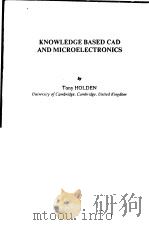
- KNOWLEDGE BASED CAD AND MICROELECTRONICS
- NORTH-HOLLAND-AMSTERDAM
-
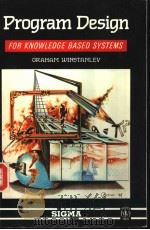
- PROGRAM DESIGN FOR KNOWLEDGE BASED SYSTEMS
- SIGMA PRESS
-
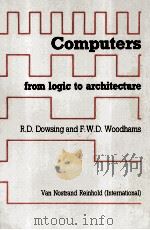
- COMPUTERS from logic to architecture
- 1990 Van Nostrand Reinhold Co.Ltd
-

- LEGAL KNOWLEDGE AND ANALOGY
- 1991 KLUWER ACADEMIC PUBLISHERS
-

- AN INTRODUCTION TO COMPUTERS AND INFORMATION PROCESSING SECOND EDITION
- 1985年 JOHN WILEY & SONS
-
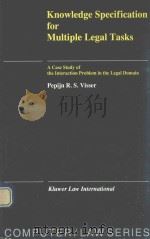
- Knowledge specification for multiple legal tasks
- 1995 Kluwer Law International
-

- LEGAL FICTIONS SHORT STORIES ABOUT LAWYERS AND THE LAW
- 1992 THE OVERLOOK PRESS
-

- INTRODUCTION TO DUTCH LAW FOR FOREIGN LAWYERS
- 1993 KLUWER
-

- Introduction to Dutch law for foreign lawyers
- 1978 Kluwer
-
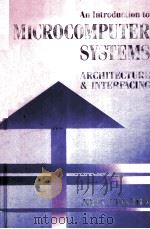
- AN INTRODUCTION TO MICROCOMPUTER SYSTEMS:ARCHITECTURE AND INTERFACING
- 1989 ADDISON-WESLEY PUBLISHING COMPANY
-
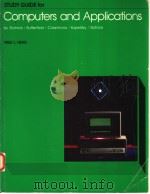
- STUDY GUIDE FOR COMPUTERS AND APPLICATIONS AN INTRODUCTION TO DATA PROCESSING
- 1986 D.C.HEATH AND COMPANY
-
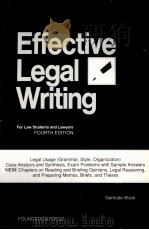
- FEEECTIVE LEGAL WRITING FOR LAW STUDENTS LAWYERS FOURTH EDITION
- 1992 FOUNDATION PRESS
提示:百度云已更名为百度网盘(百度盘),天翼云盘、微盘下载地址……暂未提供。➥ PDF文字可复制化或转WORD
